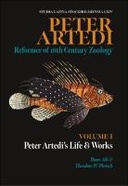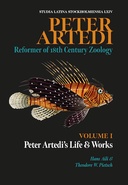Explore

Peter Artedi: Reformer of 18th Century Zoology, Vol. I
Hans Aili and Theodore Pietsch
2024
0 Ungluers have
Faved this Work
Login to Fave
In this attempt to bring together in a single volume all that is known about the Swedish naturalist Peter Artedi, a chronicle of his life is provided, beginning with his early upbringing in the Parish of Anundsjö, Ångermanland, his school days at Härnösand, his ten years at Uppsala University, his time in England, his life and work in Holland, and ending with his untimely death by drowning in an Amsterdam canal at age 30. Benefiting enormously from an early friendship with the Swedish naturalist Carl Linnaeus, famous for establishing binomial nomenclature, the modern system of naming organisms, the two early on made elaborate plans to classify plants and animals in ways that would later be described as revolutionary. Artedi, being more interested in zoology, took on the fishes, amphibians, and reptiles—as well as the plant family Umbelliferae (Apiaceae), while Linnaeus, who was already by this time working on his sexual system for plants, took all the remaining vegetable kingdom, the insects and birds. Both agreed to work independently on minerals and mammals. Although passing before he had a chance to publish on his part of the plan, Artedi left behind a wealth of material in manuscript, mainly on the biology of fishes but also on quadrupeds, that is here translated into English from the original Latin and analyzed in light of present-day knowledge. In addition to adding details to what is already known, thanks to a number of eminent scholars, about the life of Peter Artedi, an important secondary goal of this work is to formulate a new perspective on the usefulness in practice of Artedi’s zoological methods, which no naturalist had heretofore put to paper. Readers will be surprised at the depth and breadth of his contributions, especially his work on fishes, which has earned him the well-deserved title of “Father of Ichthyology.”
This book is included in DOAB.
Why read this book? Have your say.
You must be logged in to comment.

